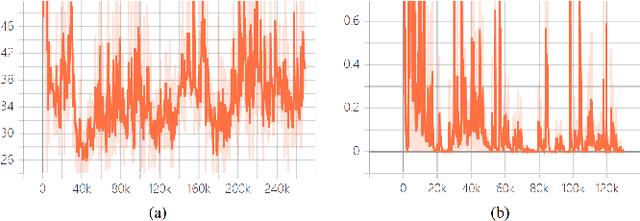Tiange Zhang
Exploring Cross-Domain Few-Shot Classification via Frequency-Aware Prompting
Jun 24, 2024Abstract:Cross-Domain Few-Shot Learning has witnessed great stride with the development of meta-learning. However, most existing methods pay more attention to learning domain-adaptive inductive bias (meta-knowledge) through feature-wise manipulation or task diversity improvement while neglecting the phenomenon that deep networks tend to rely more on high-frequency cues to make the classification decision, which thus degenerates the robustness of learned inductive bias since high-frequency information is vulnerable and easy to be disturbed by noisy information. Hence in this paper, we make one of the first attempts to propose a Frequency-Aware Prompting method with mutual attention for Cross-Domain Few-Shot classification, which can let networks simulate the human visual perception of selecting different frequency cues when facing new recognition tasks. Specifically, a frequency-aware prompting mechanism is first proposed, in which high-frequency components of the decomposed source image are switched either with normal distribution sampling or zeroing to get frequency-aware augment samples. Then, a mutual attention module is designed to learn generalizable inductive bias under CD-FSL settings. More importantly, the proposed method is a plug-and-play module that can be directly applied to most off-the-shelf CD-FLS methods. Experimental results on CD-FSL benchmarks demonstrate the effectiveness of our proposed method as well as robustly improve the performance of existing CD-FLS methods. Resources at https://github.com/tinkez/FAP_CDFSC.
Wallpaper Texture Generation and Style Transfer Based on Multi-label Semantics
Jun 22, 2021



Abstract:Textures contain a wealth of image information and are widely used in various fields such as computer graphics and computer vision. With the development of machine learning, the texture synthesis and generation have been greatly improved. As a very common element in everyday life, wallpapers contain a wealth of texture information, making it difficult to annotate with a simple single label. Moreover, wallpaper designers spend significant time to create different styles of wallpaper. For this purpose, this paper proposes to describe wallpaper texture images by using multi-label semantics. Based on these labels and generative adversarial networks, we present a framework for perception driven wallpaper texture generation and style transfer. In this framework, a perceptual model is trained to recognize whether the wallpapers produced by the generator network are sufficiently realistic and have the attribute designated by given perceptual description; these multi-label semantic attributes are treated as condition variables to generate wallpaper images. The generated wallpaper images can be converted to those with well-known artist styles using CycleGAN. Finally, using the aesthetic evaluation method, the generated wallpaper images are quantitatively measured. The experimental results demonstrate that the proposed method can generate wallpaper textures conforming to human aesthetics and have artistic characteristics.
Remote Sensing Image Translation via Style-Based Recalibration Module and Improved Style Discriminator
Mar 29, 2021



Abstract:Existing remote sensing change detection methods are heavily affected by seasonal variation. Since vegetation colors are different between winter and summer, such variations are inclined to be falsely detected as changes. In this letter, we proposed an image translation method to solve the problem. A style-based recalibration module is introduced to capture seasonal features effectively. Then, a new style discriminator is designed to improve the translation performance. The discriminator can not only produce a decision for the fake or real sample, but also return a style vector according to the channel-wise correlations. Extensive experiments are conducted on season-varying dataset. The experimental results show that the proposed method can effectively perform image translation, thereby consistently improving the season-varying image change detection performance. Our codes and data are available at https://github.com/summitgao/RSIT_SRM_ISD.
 Add to Chrome
Add to Chrome Add to Firefox
Add to Firefox Add to Edge
Add to Edge